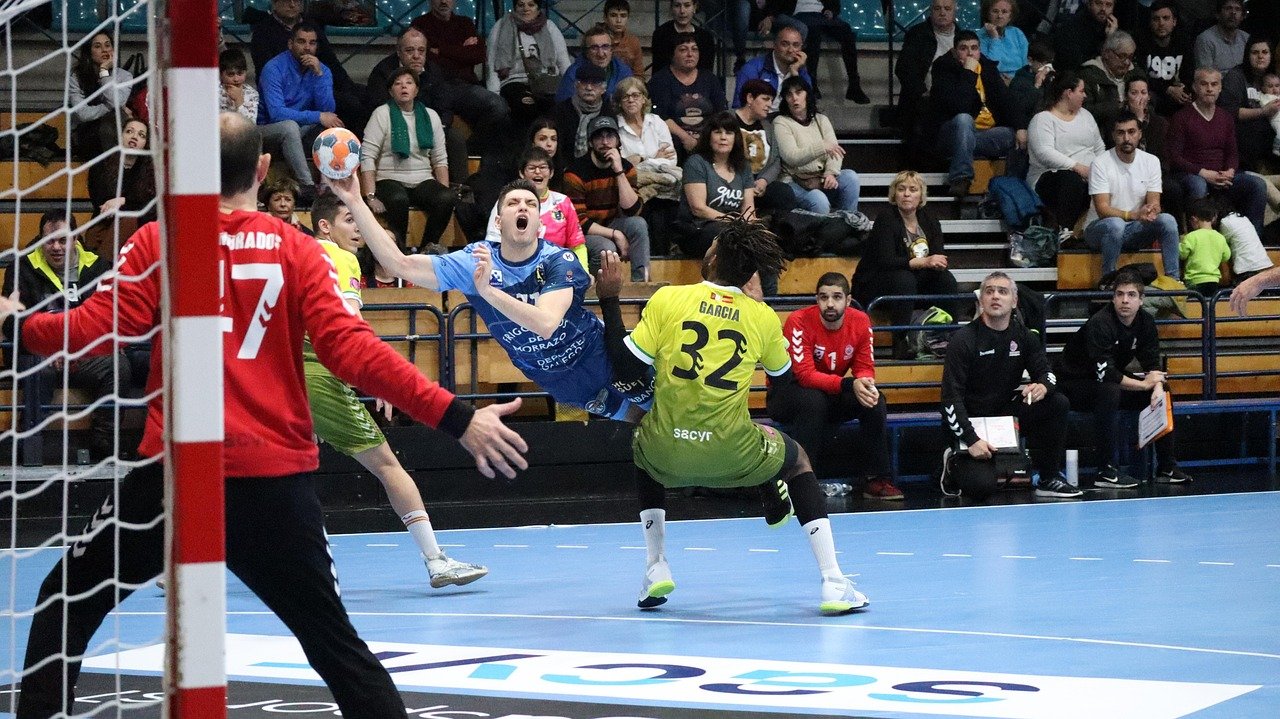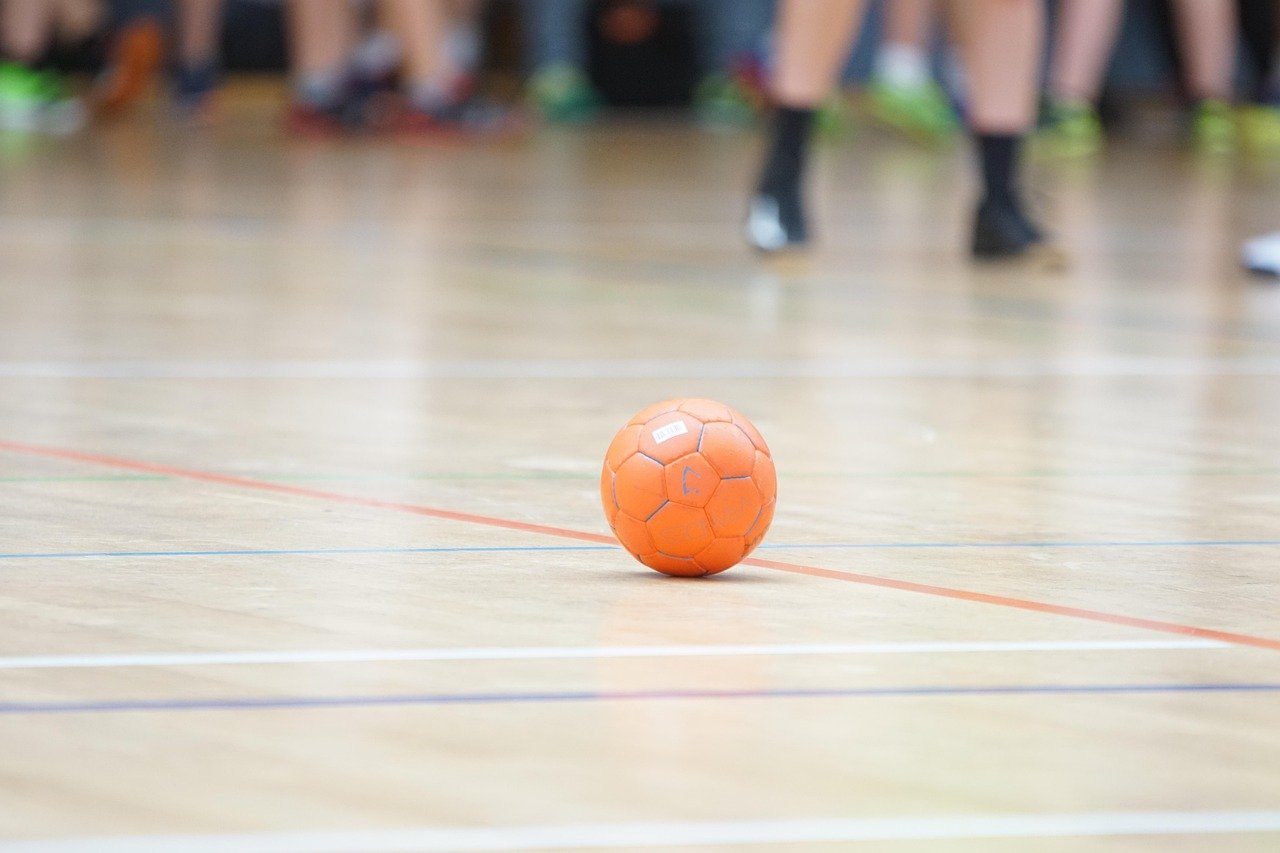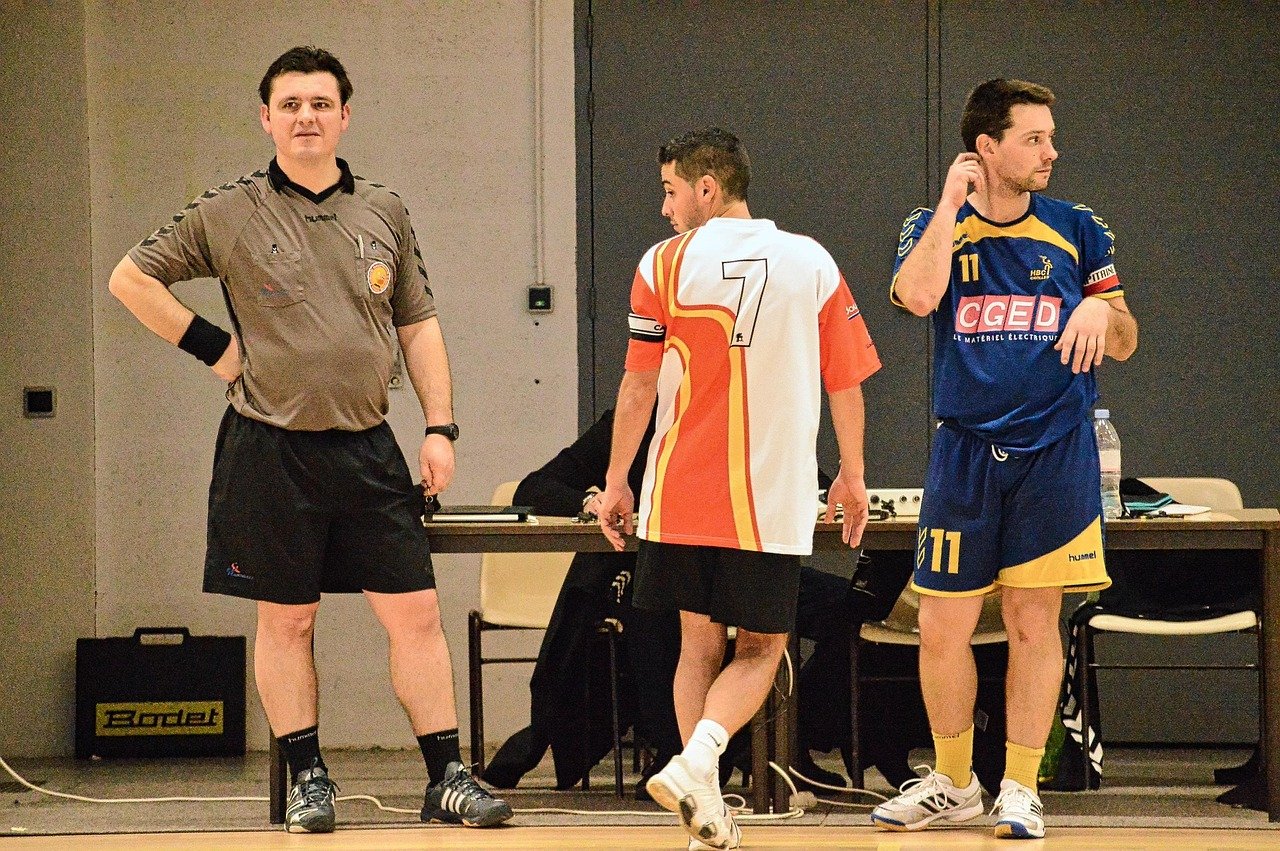Understanding the rules of handball is essential for anyone who wants to enjoy playing, coaching, or watching this fast-paced sport. Whether you’re completely new to the game or brushing up on the essentials, this guide will walk you through the fundamental handball rules in clear and simple terms.
Objective of the Game
In handball, two teams of seven players (six outfield players and one goalkeeper) compete to score the most goals by throwing the ball into the opposing team’s net. The game is split into two 30-minute halves with a 10 to 15-minute halftime interval.
The Playing Court
Handball is typically played indoors on a 40 by 20-metre court. Some key areas of the court include:
- Goal Area (6-metre zone): Only the goalkeeper is allowed inside.
- 7-Metre Line: Designates the position for penalty throws.
- 9-Metre Line: Free throws are taken from just beyond this line.
- Halfway Line: Centre of the court, used for throw-offs and restarting play.
Starting and Restarting the Game
- Throw-Off: The game starts with a throw-off from the centre. This is also how play restarts after each goal.
- Free Throws: Awarded after minor fouls or rule violations. Taken from the spot where the infraction occurred, or from the 9-metre line.
- 7-Metre Throw: Awarded for serious fouls that prevent a clear scoring chance. It is taken from the 7-metre line.
Playing the Ball
- Players can hold the ball for a maximum of 3 seconds.
- Players can take up to 3 steps while holding the ball.
- To continue play, players must dribble the ball or pass it.
- Dribbling rules are similar to basketball: you can dribble once, but you cannot double-dribble.
Scoring
A goal is awarded when the entire ball crosses the goal line between the posts and beneath the crossbar, provided the shooter was outside the goal area and did not commit a foul.
Substitutions
Substitutions in handball are allowed at any time and are unlimited. Players must enter and exit the court through the substitution area. Failure to do so can result in a two-minute suspension.
Fouls and Violations
Fouls in handball are divided into minor and major infractions.
- Minor Fouls: Often result in a free throw for the opposing team.
- Major Fouls: Include actions such as pushing, hitting, or obstructing an opponent aggressively. These may result in:
- Yellow Card: Warning
- 2-Minute Suspension: Player must sit out, and their team plays short-handed
- Red Card: Disqualification for serious infractions
Defensive Rules
Defenders may block shots, intercept passes, and position themselves to stop attackers. However, they may not:
- Grab or strike the opponent
- Block with arms or legs extended dangerously
- Step inside the goal area while defending
Goalkeeper Rules
The goalkeeper is the only player allowed in the goal area. They can:
- Use any part of their body to block shots
- Leave the goal area and act as an outfield player, but must follow outfield rules when outside the zone
Goalkeepers cannot:
- Leave the goal area with the ball
- Re-enter the goal area while holding the ball
Passive Play
Teams must show active effort to score. If a team passes without attempting to attack for too long, referees may signal passive play, leading to a turnover.
Common Penalties and Infractions
- Walking: Taking more than three steps without dribbling
- Double Dribble: Dribbling, stopping, then dribbling again
- Holding the Ball Too Long: More than 3 seconds
- Entering the Goal Area: By outfield players
- Illegal Substitution: Entering from the wrong area or while another player is still on the court
Tips to Avoid Rule Violations
- Pass or dribble quickly
- Keep track of steps
- Avoid physical contact unless it’s within legal bounds
- Communicate with teammates to maintain proper positioning
Final Thoughts
Handball is a thrilling and strategic sport made more enjoyable when players understand the rules. Learning the basics of handball will improve your gameplay, help you avoid fouls, and enhance your overall experience on the court.
As you continue playing, watching games and practicing regularly will deepen your understanding of both fundamental and advanced rules.



